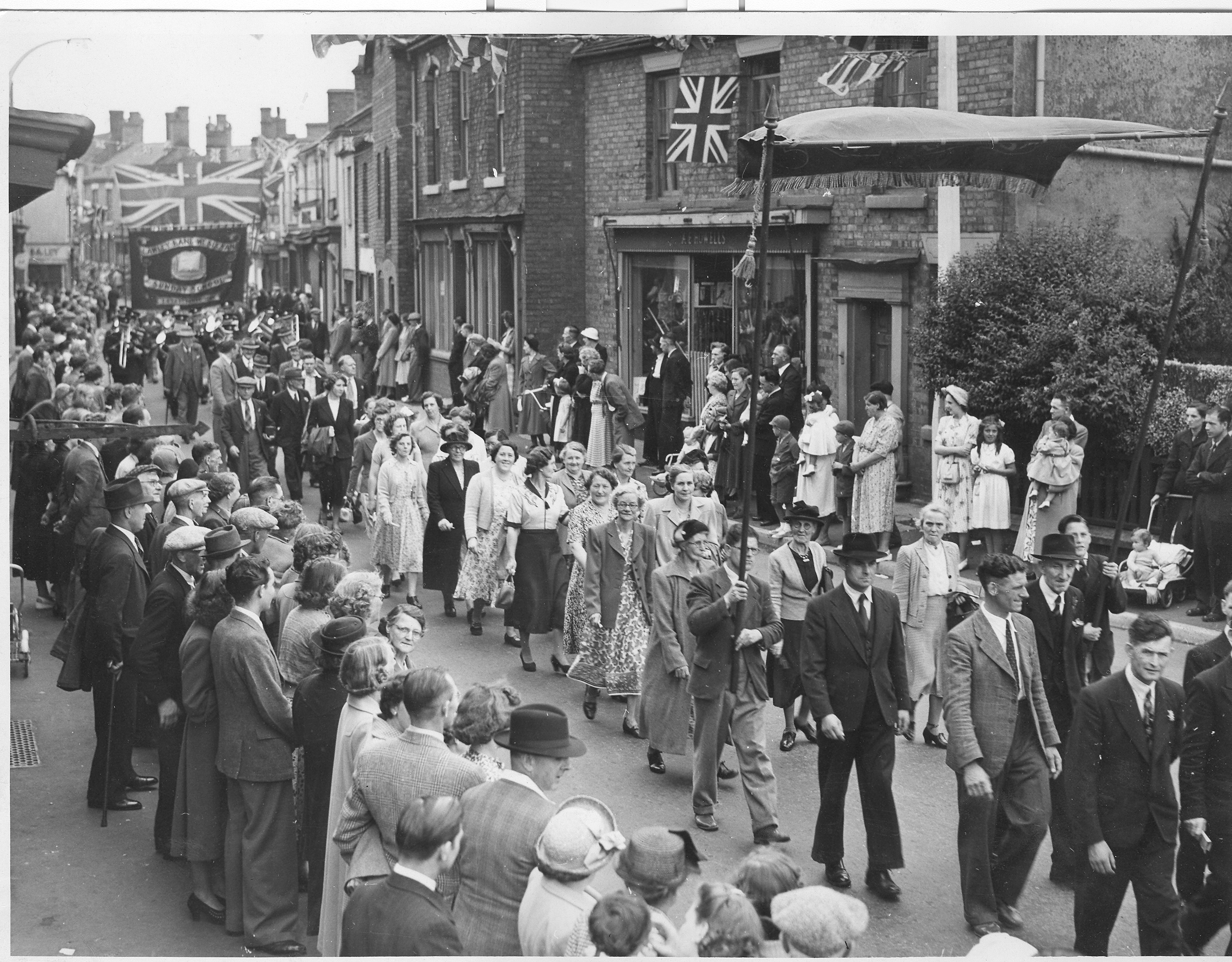Dawley Demonstration Day by S. Bruneau
Dawley Demonstration Day
by Shirley Bruneau
 Dawley Demonstration Day was a day of great celebration in Dawley. It ran for nearly 100 years from 1876 to 1971. The “Demmon”, as it was often referred to, was held each August Bank Holiday Monday except for 1959 & 1960 when it was held on a Saturday.
Dawley Demonstration Day was a day of great celebration in Dawley. It ran for nearly 100 years from 1876 to 1971. The “Demmon”, as it was often referred to, was held each August Bank Holiday Monday except for 1959 & 1960 when it was held on a Saturday.
The original Dawley demonstrations were arranged for all the noncomformist denominations to participate. It was a show of the nonconformist strength in the area with the Wesleyan Methodists, primitive Methodists, Methodist New Connexion, Congregationalists, and Baptists all taking part- a total of 16 Sunday Schools and 3073 children and their teachers were represented in the first demonstration in 1876, as reported by the Wellington Journal. The schools were divided into 3 sections for marching to Dawley: Lawley Bank, Horsehay and Little Dawley.
They would meet at their chapels and then march under their chapel banners to predetermined points to parade in their sections to Dawley where they would meet up at Meadowell field in King Street where the children and their teachers were led in singing hymns. They the paraded through Dawley altogether watched accompanied by brass bands and led by men mounted on horseback. Thousands gathered along the way to watch and cheer them on. It took over an hour for the whole parade to walk the three quarters of a mile route which was up King Street, along High Street, round the Elephant & Castle, past Dawley Park, down Chapel St, though the lower part of High Street and down King Street and Back to Meadowell field where further hymns would be sung as well as the National Anthem. The schools then returned to their respective chapels where they had tea and then sports.
In later years the demonstration was enlarged to include all local Anglican churches as well and when the Meadowell was built upon they used the council playing fields instead to meet up.
It was always a time for children to look their best: girls would wear their prettiest dresses, often white and they would carry baskets of flowers- taken from their gardens or picked wild, and boys would wear their ‘Sunday best’ clothes.
Over the years many brass bands have been involved in the Demonstration. They were not always local bands, sometimes they came from other towns in Shropshire and the Black Country and Birmingham as well.

